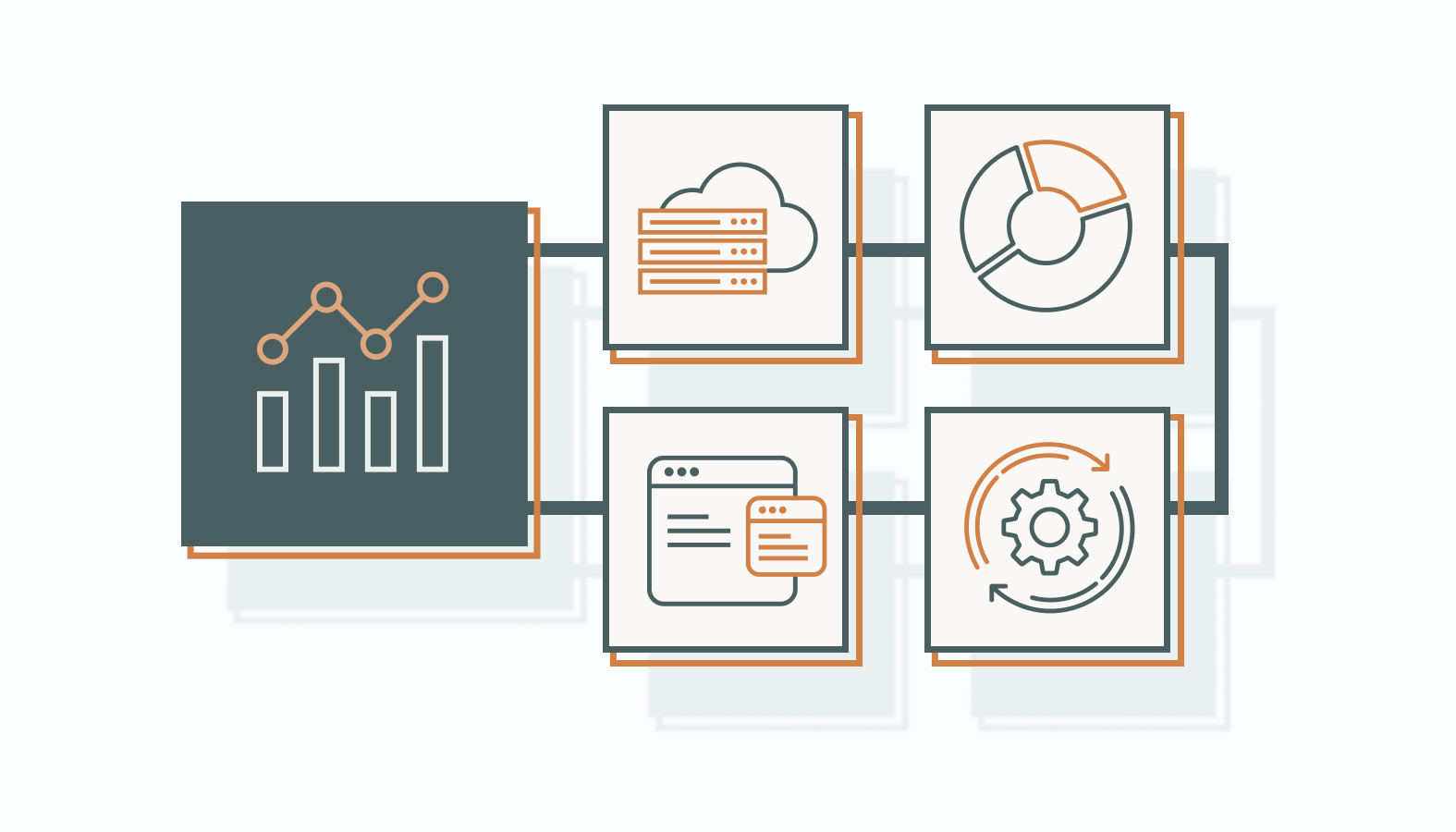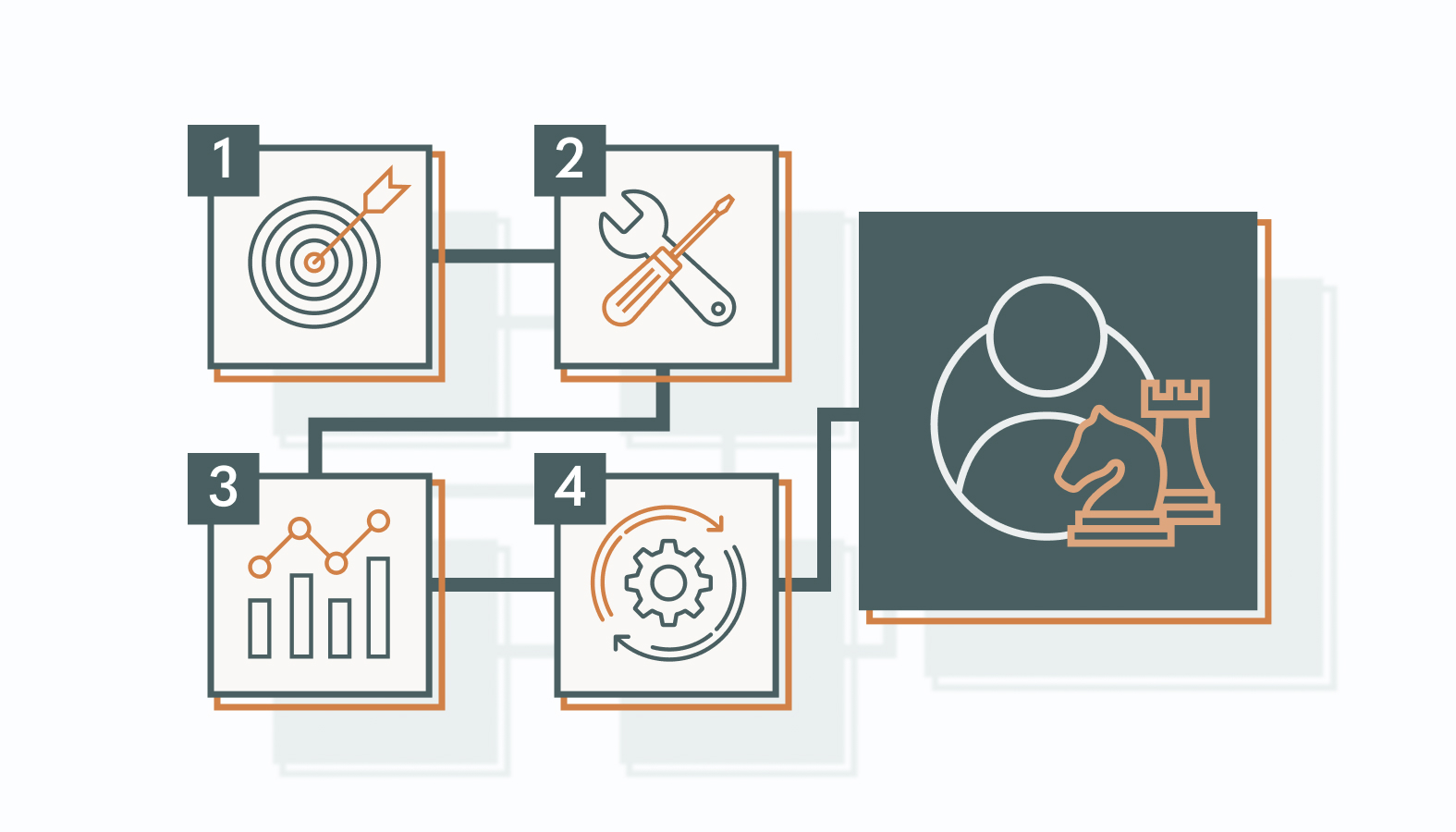You’ve got the tools. You’ve got the data. Yet, if your marketing results still feel unpredictable, you’re likely missing one crucial piece: a clear marketing analytics strategy.
Many teams track metrics without a plan, resulting in scattered insights, reactive reporting, and decisions driven more by gut than evidence. A proper strategy changes that. It aligns what you measure with where you want to go, helping you spot patterns, optimize performance, and actually learn from what’s working.
This guide walks you through building a strategy that is not only theoretically sound but also effective in the real world.
Why Marketing Analytics is Essential for Every Business
If you’re making marketing decisions without data, you’re gambling. And in business, guessing doesn’t scale. Marketing analytics gives you the insight to move with precision instead of gut instinct.
What is Marketing Analytics?
At its core, marketing analytics is the practice of tracking, measuring, and analyzing marketing performance to sharpen your strategy and improve ROI. It covers everything from data collection and analysis to interpretation and execution.
Unlike general analytics, which skims the surface, marketing analytics dives into customer behavior and campaign performance so that you can adjust in real time, not just reflect after the fact.
Here’s how it works:
- Collect the Right Data: From website clicks and sales transactions to email engagement and social sentiment, each data point helps build the whole picture.
- Analyze with Purpose: Use tools like predictive analytics, machine learning, or simple dashboards to spot patterns and trends you’d miss with the naked eye.
- Translate into Action: Insight without action is just noise. The goal is to turn raw data into smart decisions that improve performance.
Real Business Benefits of Marketing Analytics
When marketing analytics is done well, the payoff is tangible and compounding. Here’s what it can unlock:
- Smarter Budget Allocation: Know what’s actually driving revenue, and stop wasting money on tactics that don’t convert.
- Higher ROI: By refining your campaigns based on data, you increase efficiency and maximize returns.
- Stronger Customer Insights: Understand what your customers want, how they behave, and what motivates them to buy.
- More Personalization: Deliver content, offers, and experiences that match where each customer is in their journey.
- Faster Decision-Making: Eliminate the guesswork. Real-time reporting keeps your strategy nimble and your team aligned.
- Competitive Advantage: While others are still reacting, you’re optimizing. That edge compounds over time.
By building your strategy around marketing analytics, you stop chasing trends and start building systems that learn, adapt, and improve over time. Whether you’re optimizing a single campaign or realigning your entire funnel, this is how modern marketing wins.
Essentials of a High-Performing Marketing Analytics Strategy
If marketing is the engine, analytics is the control panel. Without it, you’re flying blind. A well-built marketing analytics strategy doesn’t just support your decisions. It sharpens them. It lets you see what’s working, what’s waste, and where your next best move should be.
This framework gives structure to your data efforts and ensures that your marketing serves your business goals instead of just vanity metrics.
Data Collection to Build a Complete Picture
High-quality analysis starts with the correct data — not more data, but the right data. That means pulling insights from every touchpoint where customers engage and converting those signals into something useful.
Key sources of data include:
- Customer Interactions from support channels, chat logs, and NPS surveys
- Social Media Behavior across platforms like LinkedIn, Instagram, and TikTok for sentiment and trend detection
- Web Analytics like bounce rates, time on page, and pathing reports to understand user intent
- Sales and CRM Data to map marketing touchpoints to pipeline impact and revenue
Use customer data platforms (CDPs) or data management platforms (DMPs) to unify all of this into a single view. When your data lives in silos, your insights get stuck there, too.
Data Analysis to Find the Signal in the Noise
Once your data house is in order, analysis brings it to life. This is where statistical rigor meets real business value.
Here’s what to use:
- Predictive Analytics to anticipate what your customers will do next
- Data Mining to discover unexpected patterns that can unlock new segments or product opportunities
- Machine Learning Models to automate decisions like ad bidding, lead scoring, or content recommendations
The primary objective of data analysis is to turn raw data into direction, and turn direction into action.
Interpretation and Reporting Tell the Story Behind the Numbers
The best analysis means nothing if no one understands it. Reports and dashboards should translate data into a straightforward narrative your team can act on.
Skip the clutter. Focus on clarity:
- Use interactive dashboards (like Tableau, Power BI, or Looker) to visualize performance across channels
- Tie every chart back to a business question or objective
- Segment your reporting for different stakeholders—execs need outcomes, practitioners need next steps
Good reporting doesn’t just show what’s happening. It shows what to do next.
Data Quality & Management to Ensure Continuous Accuracy
Flawed data ruins good strategy. Period.
You need strong data governance practices to keep your dataset clean, compliant, and actionable. That means:
- Routine data audits to catch inconsistencies
- Real-time validation rules to maintain accuracy
- A secure infrastructure for handling and storing sensitive information
Use enterprise-grade tools for tagging, tracking, and structuring your data as early in the process as possible. Clean data leads to clean decisions.
Your Action Plan: Implementing a High-Impact Marketing Analytics Strategy
A high-performing marketing analytics strategy doesn’t come together by chance. It’s engineered—step by step—to fuel smarter decisions, sharpen execution, and keep marketing aligned with business outcomes. This isn’t about building dashboards for show. It’s about building leverage.
Here’s how to do it right.
Step 1: Build Your Foundation with SMART Goals
Every smart strategy starts with clear objectives. The SMART framework still holds because it forces focus:
- Specific: Define what success looks like.
- Measurable: Tie outcomes to hard metrics.
- Achievable: Set goals your team can realistically reach.
- Relevant: Align with actual business priorities.
- Time-bound: Set a deadline to stay accountable.
Example: “Increase qualified leads from paid search by 25% over the next 90 days.” That’s a goal worth measuring. It’s clear, aligned, and tied to revenue.
Skip vague ambitions. Sharp goals lead to sharp insights and better decisions.
Step 2: Choosing the Right Tools That Fit Your Ecosystem
Great tools don’t fix bad strategy, but the right stack makes good strategy frictionless. Choose platforms that scale, integrate easily, and don’t require a PhD to operate.
Look for:
- Scalability: Will this tool grow with your business?
- Ease of Use: Can your team get value without constant training?
- Integration: Will it play nicely with your CRM, ad platforms, and BI tools?
Some proven options:
- Google Analytics 4 for behavioral insights across channels
- Tableau for visual storytelling and stakeholder-ready dashboards
- Salesforce Marketing Cloud Intelligence (Datorama) for syncing performance data across your marketing stack
Choose based on how well the tool complements your systems, not on trendiness.
Step 3: Operationalize Advanced Analytics
Collecting data is easy. Operationalizing it is where the pros show up.
Here’s how to embed analytics into your team’s daily workflow:
- Build the Infrastructure: Ensure data pipelines, clean schemas, and accessible storage
- Upskill Your People: Give your team hands-on training and access to the tools they’ll use
- Integrate Systems: Break silos between marketing, sales, and customer success
Every insight should flow into a decision-making loop. That means syncing analytics tools with your marketing automation, CRM, and campaign management platforms. When everything talks to each other, you stop guessing and start optimizing in real-time.
Step 4: Monitor, Learn, Adapt—Repeat
Analytics isn’t a one-and-done project. It’s a performance engine. You need regular monitoring systems to stay ahead of the curve.
Set meaningful KPIs:
- Lead quality by source
- ROAS by channel
- Conversion paths and drop-offs
- Pipeline velocity and influenced revenue
Review these weekly, monthly, and quarterly. Then, act on what you find. Tweak messaging. Shift spend. Reallocate creative resources. Optimization lives in iteration.
And don’t forget to loop learning back into strategy. That’s where growth compounds.
Strong marketing analytics isn’t about making reports prettier. It’s about making your marketing impossible to ignore and argue with. When your strategy is built on clean data, innovative tools, and clear goals, your team moves faster, your results improve, and your decisions get a whole lot easier to defend in the boardroom.
Real-World Wins: How Top Brands Use Marketing Analytics to Stay Ahead
The best way to understand the power of marketing analytics? See it in action. These companies didn’t just collect data—they built engines around it.
Here’s how they turned analytics into a serious competitive advantage.
-
Spotify: Personalization That Keeps Users Hooked
Catchy ads didn’t fuel Spotify’s rise to dominance. Data fueled it. By analyzing listening behavior across millions of users, Spotify delivers hyper-personalized playlists like Discover Weekly and Daily Mix that actually hit the mark.
The result? Sky-high engagement, retention, and user satisfaction. People feel understood, not sold to—and they keep coming back. Personalization through behavioral analytics isn’t a feature for Spotify. It’s a strategic moat.
-
EasyJet: Using Behavior Data to Drive Loyalty
EasyJet doesn’t guess what its customers want—it tracks, analyzes, and delivers. By analyzing booking patterns and customer behavior, EasyJet creates campaigns that actually resonate.
One standout result: personalized emails with flight recommendations and travel tips based on past behavior. These campaigns saw major bumps in open and conversion rates, proving what happens when your marketing speaks to actual intent, not vague personas.
This isn’t airline marketing. It’s behavioral economics at 30,000 feet.
-
Netflix: Predictive Analytics That Power Viewer Retention
Netflix doesn’t just recommend content—it predicts what you’ll love before you know it. Using viewing history, ratings, and real-time interaction data, Netflix fine-tunes its recommendation engine to keep audiences glued to the screen.
The impact? Lower churn, more binge time, and explosive subscription growth. When users feel like the entire platform was built for their preferences, they stick around—and spread the word.
Netflix’s engine isn’t just smart. It’s strategic. Predictive modeling powers both the product and the growth model.
These aren’t feel-good anecdotes. They’re blueprints. The common thread? Every one of these companies connected data to experience, and experience to revenue. That’s marketing analytics working at full throttle.
Common Challenges in Marketing Analytics (and How to Outsmart Them)
Marketing analytics can be a growth engine or a liability. The difference lies in how you collect, interpret, and apply the data. Here’s how to avoid the most common missteps that trip up even well-meaning teams.
Mistake #1: Weak Data Collection Undermines Everything
Start with bad data, and no amount of analysis will save you. Sloppy collection methods lead to skewed reports, misleading insights, and poor decisions that waste time, budget, and credibility.
Here’s how to fix that:
- Use trusted sources. Pull from platforms and systems directly tied to your marketing channels and customer journey. No third-hand guesswork.
- Choose reliable tools. Invest in platforms built for accuracy and scale. If your data pipeline has leaks, your insights won’t hold water.
- Create standardized protocols. Everyone on your team should collect and label data the same way. Document the process. Audit often.
Strong data hygiene makes everything else easier. Skip this, and you’re driving blind with a cracked windshield.
Mistake #2: Misreading the Data
Raw data doesn’t tell a story until someone smart asks the right questions. Misinterpretation happens when numbers are pulled out of context or used without considering what’s behind them.
Avoid this with:
- Contextual analysis. No metric exists in a vacuum. Traffic spikes might look good until you realize they bounced in five seconds. Always ask, “why?”
- Cross-verification. Confirm findings by looking at secondary sources, historical trends, or cohort performance. Triangulate, don’t speculate.
- Human expertise. Algorithms can surface patterns, but smart analysts give those patterns meaning. Bring in the pros who know how to translate data into strategy.
When insights are grounded in context and backed by skill, your decisions move from reactive to strategic.
Avoiding these two pitfalls puts you ahead of most teams. Data is your sharpest tool, so make sure it’s clean, calibrated, and in the right hands.
Build a Strategy That Learns While You Scale
Marketing analytics isn’t a dashboard exercise. It’s a performance advantage. When your data strategy is intentional, consistent, and deeply aligned with business outcomes, you stop reacting and start predicting.
Here’s the playbook in one shot:
- Set sharp goals that move real business needles
- Choose tools that empower, not overcomplicate
- Prioritize clean data and structured collection
- Translate insights into decisions with speed and clarity
- Keep learning, refining, and adjusting as the market shifts
Your data should never just sit there. It should work for you, expose blind spots, and unlock growth you didn’t know you were missing. That’s what a real analytics strategy does.
Want to See What Smart Marketing Analytics Could Unlock for You?
You’ve seen the systems, tools, and frameworks. Now, it’s time to tailor the strategy to your business.
Whether you’re optimizing an underperforming funnel, upgrading your stack, or finally connecting marketing to revenue, our team is ready to help you get it right. No pressure, no hard sell — Just a clear, expert-level conversation about how your data can drive serious performance.
Schedule a candid conversation with one of our experts. » We’ll dig in, get specific, and help you turn analytics into an advantage that sticks.









